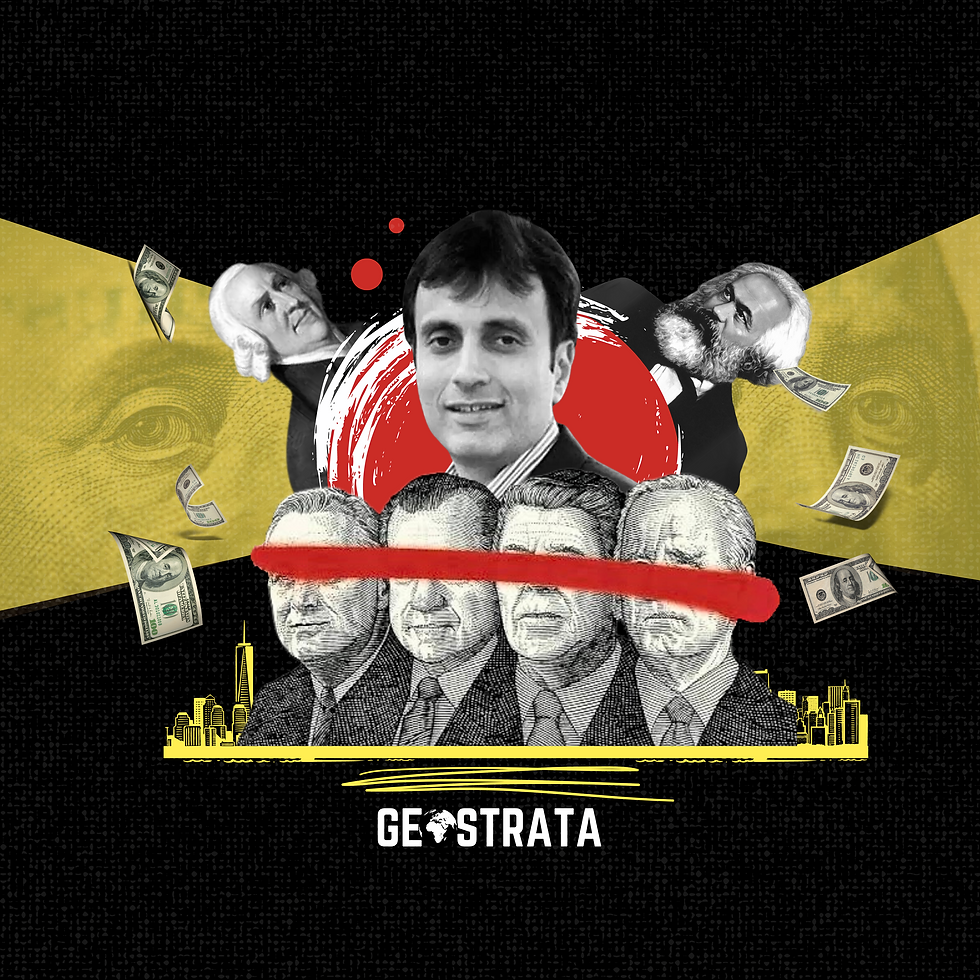What Went Wrong With Capitalism - A Book Review
- THE GEOSTRATA

- Aug 4, 2024
- 3 min read
“There is no art which one government sooner learns of another than that of draining money from the pockets of the people.” ~ Adam Smith in The Wealth of Nations
Since the dawn of classical economics, arguments in favour and against the favourability of state intervention in economic affairs and market regulation have been debated. If it was John Maynard Keynes who supported the idea of market intervention by saying, “The important thing for government is not to do things which individuals are doing already, and to do them a little better or a little worse; but to do those things which at present are not done at all,” it was Milton Friedman, on the other hand, who applauded the orthodox classical economic ideas in 1998 when he said, “To judge from the climate of opinion, we have won the war of ideas. Everyone—left or right—talks about the virtues of markets, private property, competition, and limited government.”

Illustration by The Geostrata
Such discourse has been part of every economic generation when experts analyse the feasibility of open market and laissez-faire systems. The most recent example is a book titled “What Went Wrong with Capitalism” by Ruchir Sharma, published by Allen Lane (Penguin Random House).
Divided into three parts and sixteen chapters, the book provides an important perspective on the evolution of capitalism and state welfarism.
The author warns in the book against an impending global economic crisis due to the rise in deficit spending by governments across the globe. He advocates why the debate about fixing capitalism has to start with a clear understanding of what went wrong with it in the first place
He further explores how, in the name of less government, state intervention has drastically increased in matters concerning economic affairs, further aggravating the already derailed economic system in the aftermath of the Keynesian revolution.
While the book explicitly does not criticise Keynesian ideas, it surely warns that Keynesian measures that are being taken during times of deficit might lead to populist policies that can render state exchequer eroded in the end.
It says, “The Keynesian idea, born in the Depression, that governments should run deficits to create jobs in hard times and surpluses in good times, had given way to running deficits all the time… He saw government stimulus as a crisis measure, not the permanent feature of capitalism it was to become.”
The first part of the book, which is also the largest part with nine chapters in it, warns against the rise and rise again of big governments. It tracks back the history of the American economic system from the time of Alexander Hamilton and Thomas Jefferson.
The author highlighted the divergences of American economic thoughts, with Hamilton favouring the positive use of national debt as “a national blessing” and “a powerful cement of [American] union,” and Jeffersonians opposing the excess of the state, fearing overreaching control of government over money and credit systems.
This part also focuses on the drastic changes that occurred in the American and global economies in the aftermath of the New Deal, brought out by FDR, which was supposed to curb the so-called cynical market forces amid the Great Depression.
The second part of the book, inter alia, focuses on the perils of constant relief, the rise of oligopolies in the economy and how it is against the ideals of capitalism, and new answers to the productivity paradox. In conventional terms, the productivity paradox refers to the situation where there is a slowdown in productivity growth despite rapid development in other sectors of the economy.
The author argues that leaders must choose to spend more and intervene less in order to increase productivity, not the other way around.
The final part of the book provides a path to balance where it covers issues such as why capitalism still works and what is the way out from current political economic predicament.
“The most competitive states are attracting investment from all over the world, acting as models in their own way. Capitalism works, drawing in new people and business where it is permitted and welcome,” it argues.
The book rightly highlights the pitfalls of popular capitalism that are in divergence with the very ideals of true capitalism. In the last century, we have seen the disastrous effects of anti-capitalist policies that were thrust amid global ideological and economic competition.
Today, it may not be the moment of ‘End of History,’ as Francis Fukuyama claimed, but capitalism is still humanity’s best hope for economic and social progress, but only if it is free to work.
Amid the current geopolitical and geoeconomic churn, the book becomes an essential read to understand the intricacies of modern political economy.
BY DARSHAN GAJJAR
TEAM GEOSTRATA
.png)







Highly informative and insightful review! One can get a lot of gist about how "capitalism" still works ,especially during hard times also...
Well done!! 👏👏
Very informative and well researched
Great work
wonderful insights, seems like a very interesting read
Highly informative!!